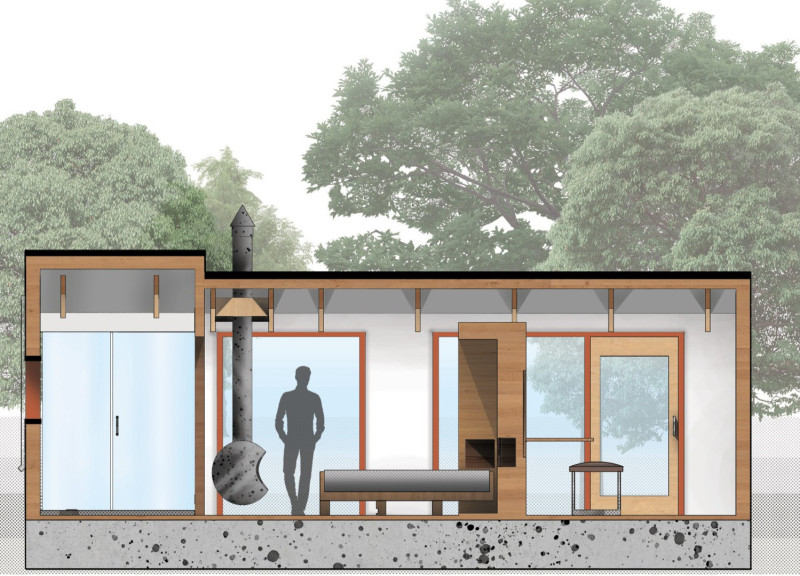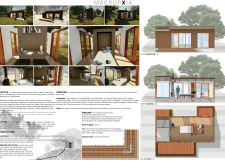5 key facts about this project
MACROPXIA is located in a forested area of Canada, emphasizing a design that connects with nature. The objective is to create a living space that feels integrated with the surrounding landscape. By using large windows and open layouts, the design allows the outdoors to be a part of daily life. Transparency is a key theme, giving occupants the feeling of being surrounded by nature even when inside.
Spatial Arrangement and Interior
The layout prioritizes a strong connection to the outside world. The extensive glazing on the north and south facades not only floods the interior with natural light but also frames views of the landscape. As people move through the space, they can see changing light patterns throughout the day. This interaction with shifting natural elements enhances the overall experience within the home.
Materiality
Cross-Laminated Timber (CLT) is the main material used throughout MACROPXIA. It offers both strength and aesthetic appeal, supporting the design's goal of sustainability. The use of wood cladding, which is 10mm thick, helps the structure blend in with the forest environment. Gypsum board is used for interior surfaces, providing a practical solution while maintaining a clean and simple look.
Sustainability Features
Sustainability is an important focus for this design. Solar panels are placed on a slanted roof, positioned to capture maximum sunlight in the local climate. This renewable energy feature reduces the building's reliance on traditional energy sources. The design also incorporates a rainwater collection system that directs water into a shed, contributing to responsible water use.
Innovative Furniture Design
The interior includes multifunctional furniture designed to save space and enhance usability. A central piece can be used as both a bed and a table, allowing for flexible living arrangements. This thoughtful design decision keeps the environment open and spacious, aligning with the overall theme of fluidity and connection to nature.
One notable aspect of MACROPXIA is its ability to adapt to seasonal changes. Additional insulation can be added as needed, maintaining comfort throughout the year while keeping the connection to its natural setting.



















































